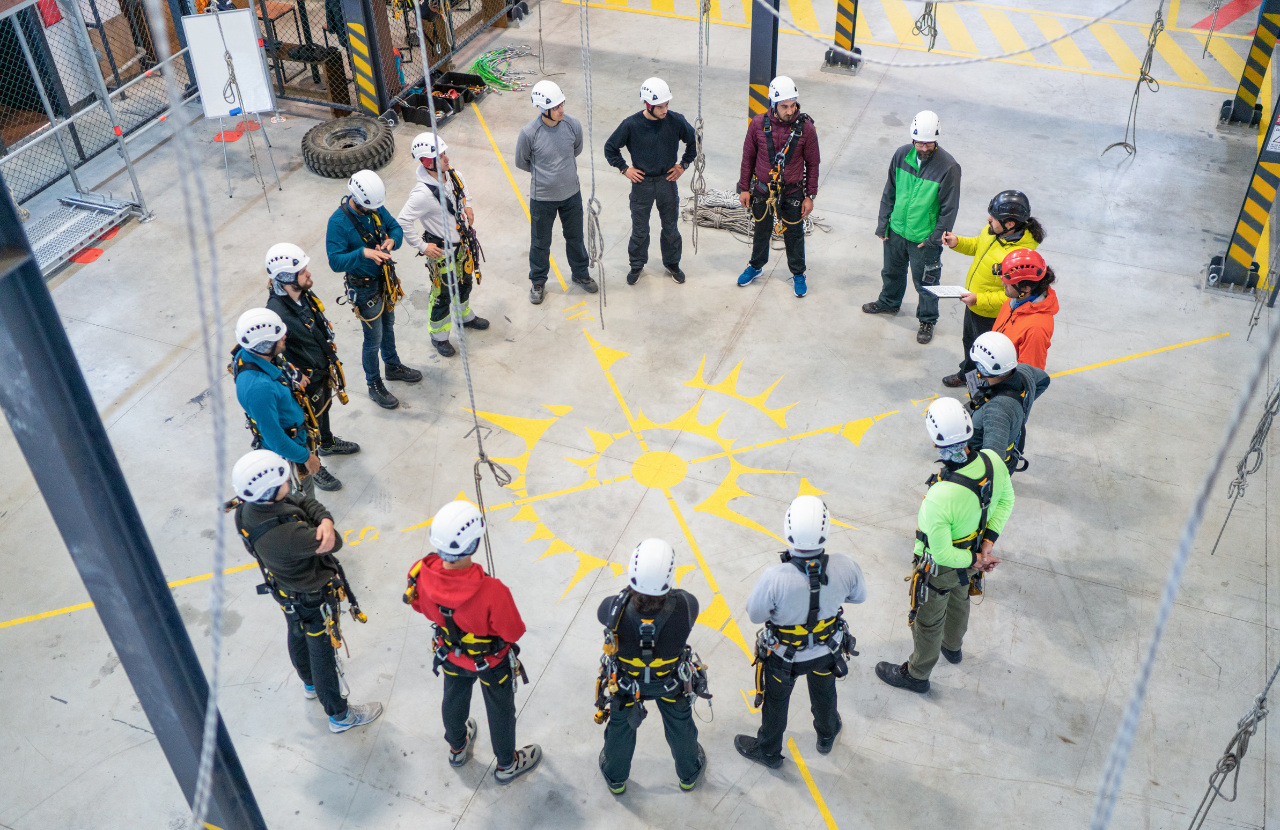
This article explores why health and safety training is important in the workplace, looking beyond compliance to examine the role of training in shaping safe behaviours, strengthening organisational culture, and supporting day-to-day operations.
Drawing on national and international research, we look at the ways in which effective training protects people, reduces risk, and contributes to long-term business resilience.
What is health and safety training?
Health and safety training educates employees about workplace hazards, safe working practices, and their responsibilities under health and safety law.
Training supports individuals understand how to prevent accidents, respond to incidents, and carry out their duties in a way that protects themselves, their colleagues, and others who may be affected by their work.
Here are the types of health and safety training employees may undertake:
General awareness training
General awareness training provides employees with a foundational understanding of common workplace hazards and how to manage them. This type of training is suitable for all employees and covers topics such as:
- Fire safety training
- Manual handling
- Health and safety awareness
- Display screen equipment (DSE) training
These courses help create a shared baseline of knowledge across an organisation, promoting a culture of safety and ensuring everyone understands their responsibilities.
Role-specific training
Role-specific training is tailored to the risks and duties associated with an individual’s job. It is essential for employees who work in higher-risk environments or perform specialist tasks. Examples include:
- Working at height training
- Abrasive wheels training
- COSHH (Control of Substances Hazardous to Health) training
- Asbestos awareness training
- Fire warden or fire marshal training
Providing training for the hazards faced in a role helps employees to work safely and competently. At Praxis42, we offer a comprehensive library of training courses alongside a bespoke training service that tailors content to specific roles, risks, and organisational needs.
Refresher training
Refresher training helps to make sure that knowledge stays current and that safe practices are reinforced over time. It is particularly important when procedures change, new equipment is introduced, or when legislation is updated. Common refresher courses include:
- IOSH Managing Safely Refresher
- Fire safety refresher training
- Manual handling refresher
- First aid at work refresher
Regular refresher training supports a strong safety culture, keeps knowledge up to date, and supports ongoing compliance with legal requirements.
Is workplace health and safety training a legal requirement?
In the UK, health and safety training is a legal requirement for employers.
Under the Health and Safety at Work etc. Act 1974, employers have a duty to provide the information, instruction, training, and supervision necessary to ensure, so far as is reasonably practicable, the health, safety, and welfare of their employees. This is further reinforced by the Management of Health and Safety at Work Regulations 1999, which require employers to provide adequate health and safety training when:
- Employees are first recruited
- When employees are exposed to new or increased risks
- And at regular intervals where appropriate.
Regulation 13(2) of the Management of Health and Safety at Work Regulations 1999 states that training must take place during working hours and be adapted to reflect any changes in risk.
Why is health and safety training important? The evidence behind the impact
Reduces workplace injuries
In Great Britain, there has been an 70% reduction in fatal workplace injuries since the 1970s, a dramatic improvement attributed to stronger regulations, better awareness, and, importantly, comprehensive training programs.
Similar trends are observed globally: the International Labour Organization (ILO) estimates that up to 3 million work-related deaths occur annually, and cites lack of training, particularly among vulnerable workers, as a key risk factor. Targeted training, especially in high-risk sectors like construction, has been shown to reduce incidents such as fatal falls by up to 50% (Gallup World Risk Poll, 2024).
Health and safety training also fosters a proactive safety culture. Research shows employees who receive regular training are more likely to report hazards and near misses, enabling employers to address issues before they lead to accidents (Gallup World Risk Poll, 2024).
Makes business sense
Beyond saving lives, health and safety training makes strong business sense. The UK lost over 33 million working days in 2023/24 due to work-related illness and injury, costing the economy an estimated £415 million a week.
According to OSHA, effective workplace safety programs, including training, reduce injuries, lower business costs, and improve productivity by minimising compensation claims, medical expenses, and operational disruptions.
Why is health and safety awareness training important for supervisors?
Supervisors bridge the gap between senior management’s policies and the realities of frontline work. Health and safety awareness training enables them to interpret and adapt policies meaningfully within the specific context of their team’s daily activities.
A systematic review of 22 studies found that supervisor training consistently improves safety knowledge, attitudes, communication, and behaviour which directly contributing to safer work environments.
Crucially, supervisors also shape the psychological safety climate of a workplace. Research shows that employees’ perceptions of risk (and their willingness to report concerns) are heavily influenced by how seriously their immediate supervisor treats safety. A study published in the Journal of Occupational and Environmental Medicine found that strong supervisor safety support significantly reduces the likelihood of workplace injury, especially in high-risk or vulnerable work settings.
Supervisors also play a vital role in recognising early warning signs like near misses or unsafe shortcuts that often precede more serious incidents. Safety awareness training sharpens their ability to spot these trends and intervene constructively. As highlighted by Safety & Health Magazine, supervisors are the “first line of defence” in preventing injuries because of their close, continuous contact with frontline staff and their influence on team norms.
The consistency and credibility of safety policy enforcement depend on well-informed supervisors. When supervisors are aligned in their understanding and confident in their responsibilities, employees are far more likely to comply with procedures and trust the system. Organisations like the U.S. Air Force mandate structured Supervisor Safety Training (SST) because it enables leaders to manage risks more effectively and sustain a culture of accountability.
Why is health and safety everyone’s responsibility?
An effective health and safety system relies on shared responsibility across an organisation.
While leadership sets the tone, it is through widespread training that individuals gain the competence and confidence to take ownership of safety in their roles. Training reinforces the principle that health and safety is not the responsibility of a few, but a collective commitment embedded in daily operations.
Training also promotes vigilance and active participation. Evidence from the Gallup World Risk Poll shows that workers who received safety training within the past two years were more than three times as likely to report hazards or near misses than those without training. This also reinforces the importance of regular refresher training.
When all employees are informed and engaged this leads to a resilient safety culture where safe practices are consistently upheld, risks are managed collectively, and continuous improvement becomes the norm. Training is the mechanism that supports this culture, ensuring that health and safety is truly understood and acted upon by everyone.
Health and safety training – why choose Praxis42?
Recognising why health and safety training is important is key to embedding a safer, more compliant working environment. For over two decades, we have supported organisations across every sector with expertly designed online training that provides employees with the knowledge to work safely, responsibly, and in compliance with the law.
Our IOSH Approved, CPD Certified online courses are developed by experienced professionals to protect the wellbeing of your workforce and reduce risk across your operations. These courses help you meet legal obligations while strengthening day-to-day safety practices.
To find out how we can help you, please see our library of health and safety courses or talk to our friendly team on 0203 011 4242/ info@praxis42.com about bespoke training courses to suit your business needs.

Adam Clarke
Managing Director (Consulting)
